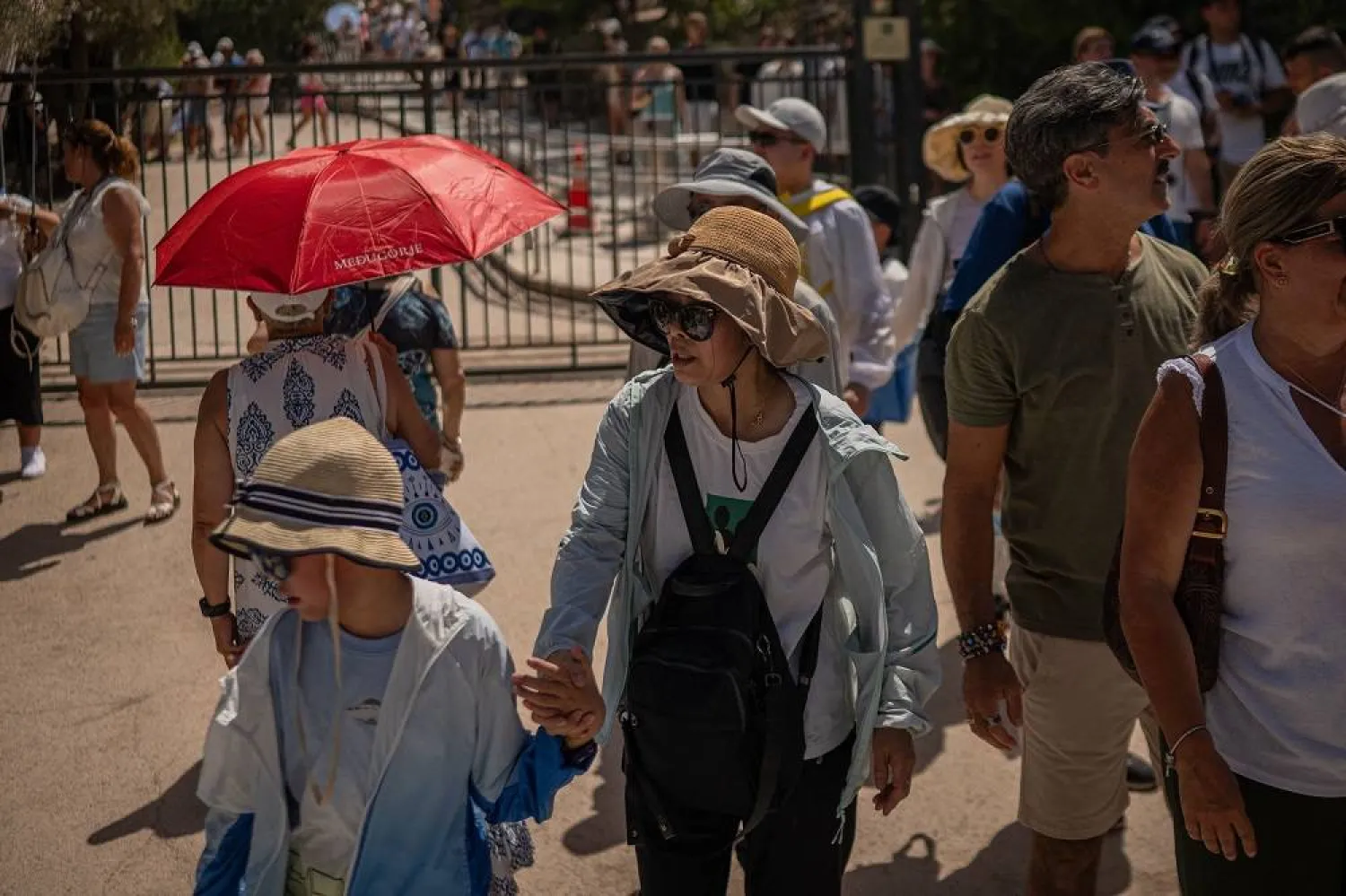Cruel heat is baking southern Europe as the continent slips deeper into summer.
In homes and offices, air conditioning is sweet relief. But under the scorching sun, outdoor labor can be grueling, brutal, occasionally even deadly.
A street sweeper died in Barcelona during a heatwave last month and, according to a labor union, 12 other city cleaners have suffered heatstroke since. Some of Europe's powerful unions are pushing for tougher regulations to protect the aging workforce from climate change on the world's fastest-warming continent.
Cleaning the hot streets
Hundreds of street cleaners and concerned citizens marched through downtown Barcelona last week to protest the death of Montse Aguilar, a 51-year-old street cleaner who worked even as the city's temperatures hit a June record.
Fellow street sweeper Antonia Rodríguez said at the protest that blistering summers have made her work “unbearable.”
“I have been doing this job for 23 years and each year the heat is worse,” said Rodríguez, 56. “Something has to be done.”
Extreme heat has fueled more than 1,000 excess deaths in Spain so far in June and July, according to the Carlos III Health Institute.
“Climate change is, above all, playing a role in extreme weather events like the heatwaves we are experiencing, and is having a big impact in our country,” said Diana Gómez, who heads the institute’s daily mortality observatory.
Even before the march, Barcelona’s City Hall issued new rules requiring the four companies contracted to clean its streets to give workers uniforms made of breathable material, a hat and sun cream. When temperatures reach 34 C (93 F), street cleaners now must have hourly water breaks and routes that allow time in the shade. Cleaning work will be suspended when temperatures hit 40 C (104 F).
Protesters said none of the clothing changes have been put into effect and workers are punished for allegedly slacking in the heat. They said supervisors would sanction workers when they took breaks or slowed down.
Workers marched behind a banner reading “Extreme Heat Is Also Workplace Violence!" and demanded better summer clothing and more breaks during the sweltering summers. They complained that they have to buy their own water.
FCC Medio Ambiente, the company that employed the deceased worker, declined to comment on the protesters' complaints. In a previous statement, it offered its condolences to Aguilar's family and said that it trains its staff to work in hot weather.
Emergency measures and a Greek cook
In Greece, regulations for outdoor labor such as construction work and food delivery includes mandatory breaks. Employers are also advised, but not mandated, to adjust shifts to keep workers out of the midday sun.
Greece requires heat-safety inspections during hotter months but the country's largest labor union, the GSEE, is calling for year-round monitoring.
European labor unions and the United Nations’ International Labor Organization are also pushing for a more coordinated international approach to handling the impact of rising temperatures on workers.
"Heat stress is an invisible killer,” the ILO said in a report last year on how heat hurts workers.
It called for countries to increase worker heat protections, saying Europe and Central Asia have experienced the largest spike in excessive worker heat exposure this century.
In Athens, grill cook Thomas Siamandas shaves meat from a spit in the threshold of the famed Bairaktaris Restaurant. He is out of the sun, but the 38 C (100.4 F) temperature recorded on July 16 was even tougher to endure while standing in front of souvlaki burners.
Grill cooks step into air-conditioned rooms when possible and always keep water within reach. Working with a fan pointed at his feet, the 32-year-old said staying cool means knowing when to take a break, before the heat overwhelms you.
“It’s tough, but we take precautions: We sit down when we can, take frequent breaks and stay hydrated. We drink plenty of water — really a lot,” said Siamandas, who has worked at the restaurant for eight years. “You have to find a way to adjust to the conditions.”
The blazing sun in Rome
Massimo De Filippis spends hours in the blazing sun each day sharing the history of vestal virgins, dueling gladiators and powerful emperors as tourists shuffle through Rome’s Colosseum and Forum.
“Honestly, it is tough. I am not going to lie,” the 45-year-old De Filippis said as he wiped sweat from his face. “Many times it is actually dangerous to go into the Roman Forum between noon and 3:30 p.m.”
At midday on July 22, he led his group down the Forum’s Via Sacra, the central road in ancient Rome. They paused at a fountain to rinse their faces and fill their bottles.
Dehydrated tourists often pass out here in the summer heat, said Francesca Duimich, who represents 300 Roman tour guides in Italy’s national federation, Federagit.
“The Forum is a pit; There is no shade, there is no wind,” Duimich said. “Being there at 1 p.m. or 2 p.m. in the summer heat means you will feel unwell.”
This year, guides have bombarded her with complaints about the heat. In recent weeks, Federagit requested that the state’s Colosseum Archaeological Park, which oversees the Forum, open an hour earlier so tours can get a jump-start before the heat becomes punishing. The request has been to no avail, so far.
The park’s press office said that administrators are working to move the opening up by 30 minutes and will soon schedule visits after sunset.







